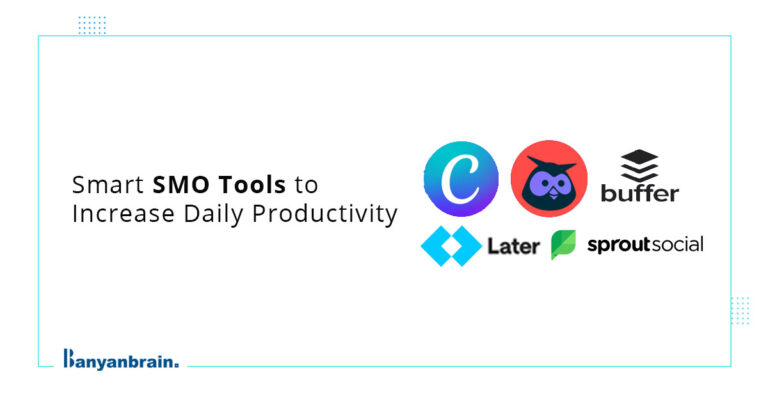When looking for digital marketing tips, the contrast between good, bad and neutral SEO practice defines white hat vs. black hat vs. grey hat SEO. A lot of complexities come with practicing effective Search Engine Optimization. It might get a little overwhelming to understand what you should prioritize first. Keep in mind that there isn’t a particular SEO technique. As a matter of fact, everyone utilizes it differently based on what works best for their website and brand. There is a very slight difference between dabbling around with keyword research strategies, on-page, or off-page SEO factors that work for your website in maneuvering search engine algorithms to boost SERP ranking.
What are White Hat vs. Black Hat vs. Grey Hat SEO?
The terms ‘White hat, black hat, and grey hat’ originate from old Western films, where the morally right characters would usually put on white cowboy hats, the antihero wears grey and the bad guy wears black ones. In the recent tech industry, these terms refer to hackers. Specialists have formulated the expression black, white, and grey hat SEO to emphasize the difference between good, bad, and neutral SEO practices.
Understanding the difference
It is important to recognize the differences between white hats vs. black hats vs. grey hat SEO. Even if done inadvertently, Google or Bing can impose a penalty if found using black hat SEO that can seriously hurt your SERP ranking in the long term. What’s even worse is that search engines may ban your site altogether. By understanding the differences from the start, you’ll lay a strong base for your brand, and trust that the SEO strategies you’re implementing follow the laws while remaining effective in growing your website over time.
Here are the key differences:
| White Hat SEO | Black Hat SEO | Grey Hat SEO |
| On-page SEO factors (technical) | Cloaking | SEO Squatting |
| Off-page SEO factors | Doorway pages | Negative SEO |
| Local SEO | Hidden Text | Spun Content |
| App-store optimization | Link Farms | Paid Links |
| YouTube SEO | Sneaky Redirects | Domain Grabbing |
Black Hat SEO
Black hat SEO defines a set of practices that have seen an increase in use to boost a site or page’s rank in search engines through means that go against the search engine’s terms of service. The website may receive a higher SERP ranking at first by manipulating search engine algorithms, but it will have the opposite effect in the long run. They fall under unethical SEO practices.
Let’s go through some of the black hat SEO techniques to avoid:
- Keyword stuffing: This form of black hat SEOs try to manipulate their website ranking by repeatedly using their main target keywords unnaturally and out of context. Pointing out keyword stuffing turns out to be easy as the mentioned text is outside the main content. It makes little sense when read aloud. This is an outdated strategy that won’t work with Google and Bing’s algorithm today, and will definitely result in a penalty.
- Hidden text: It is the text that is colored to match the background color of a webpage so that it cannot be visible to the viewer. Hidden text is commonly implemented by Black Hat SEOs in hopes to sneak extra text or relevant keywords onto the webpage. Doing it mainly to appeal to search engines. At times, the text is even written in a font size of zero. This is a deceptive strategy, and advanced search engine crawlers will surely detect this tactic and lower your ranking.
- Manipulative links: It’s also referred to as link schemes. Black hat SEOs commonly employ this tactic. Mutual backlinking occurs when black hat SEOs hide various parts of their site, blog comments, and even physically hidden links. As adding links to your content is a good way to boost rankings, they pack them into their site, even though it adds no value to the site. Search engines will most likely shut down this strategy.
- Violation of guidelines: All black hat SEO tactics clearly disregard Google and Bing’s Webmaster and other search engines’ Guidelines, and therefore should be avoided at all costs. In case you suspect a web page or site is violating guidelines, you should file a report for spam.
White Hat SEO
White hat SEO is the exact opposite of black hat SEO. It defines any practice that improves your search ranking on a Search Engine Results Page (SERP) while maintaining the integrity of your website and abiding by the search engine’s ‘terms of service’. All white hat SEO play by the rules. This improves your website and brand as a whole in the long run. Shift away from the aim of achieving high rankings quickly. Focus more on strengthening connections with your viewers, you will see the best results over time.
Let’s have a look at some white hat SEO strategies:
- Put users first: If your content caters to the user’s needs rather than the search engines, you are in the correct place. Search engine crawlers have advanced well past old tactics that used to work previously. They are now more focused on user satisfaction. While certain algorithm-based strategies may get users initially on your page, the bounce-back rate is if their needs aren’t met due to a lack of quality content. This will hurt your SERP rankings in the long run, so best focus on meeting users’ needs instead.
- Make an investment worth making: While certain quick-fix Black hat SEO tactics may spike rankings in the beginning, the long-term results may be detrimental to your website and brand as a whole. Instead, choose to invest in content that fulfills the audience’s needs. This will strengthen your credibility both from users and search engines, growing your SERP ranking over time.
- Prioritize quality content: Focusing more on quality will help your website significantly SEO-wise. Continuously updating your information with dates, relevant sources, and refreshing content will keep your audience engaged and make them come back for more. You should view efficient white hat SEO as a process, not a checklist that you will simply complete and be over with. Avoid stuffing your web pages with irrelevant links, keywords, and pictures to appeal to search engines. Try to find other ways to keep your audience engaged with relevant quality content instead.
- Utilize schema markup: Google has a powerful algorithm that relies on many factors, but it certainly isn’t magic. Just like any piece of code, it can have trouble understanding the context of certain information, or what it is even looking at. Schema markup is a way of structuring the data on your website. This is so that Google’s search engine gets additional clues into what information is being presented and why.
- Quality Link Building: Link building is one of the most fragile processes in the white hat SEO toolbox. High-quality links are vitally important, as that a site with none of them is going to limp rather than dash to the top of search rankings. Even so, it can be easy to overdo it. Most links come from the content or other resources that you create for other sites or their audiences.
Naturally, white hat SEO is no easy task. You need to go through a lot of email outreach to partners that you pick very carefully. You’re still going to have to make a lot of pitches and carefully manage the velocity at which you accept and acquire new links back to your site. Staying on the white hat side of things is just a matter of being discerning, and caring about what your audience shares with the audience of the people you link to.
Grey Hat SEO
Grey hat SEO is a mixture of black and white hat SEO. By definition these SEO practices belong neither to the black nor white hat category as the terms of service regarding the issue are unclear. In other words, grey hat SEO techniques find themselves falling under either white hat or black hat. It depends on who you ask as the line between the two finds itself blurred.
Here are some signs to check if you’re in the grey hat SEO territory:
- The Goldilocks: Simply put a tactic that is currently either black or white hat but with changes to the ways search engines work, could become the opposite in the future. There isn’t any true harm in practicing grey hat SEO. However, it is best to be wary if you keep pushing the limits of certain strategies to boost your rankings. It ensures that you aren’t regressing back to black hat SEO areas.
- Blurred lines: The line between white hat SEO and black hat SEO is certainly blurred. Approach with caution if you find yourself in the zone between right and wrong practices in accordance with search engine guidelines. A great way to avoid penalties and bans is to refer to Google, Bing’s Webmaster, or other search engines’ Guidelines. In case you aren’t sure whether what you’re doing is technically allowed, ask yourself if you are willing to inform Google of what you’re doing. Being honest and following your instincts should keep you in the clear.
Key Takeaways
There is a lot to remember when practicing SEO the right way. Some points to keep in mind about white hat vs. black hat vs. grey hat SEOs when moving forward are:
Everything in moderation: The key to an effective SEO is to maintain balance. Try to stay in white hat SEO and carefully considered grey hat areas is your safest route. Adhere to search engine guidelines and focus on your user’s needs, and you’re good to go.
What should you do?
When in doubt, ask yourself if you would feel comfortable telling Google, Bing, or other search engines what you’re doing. It is a good way to gauge whether or not you’re remaining in the white hat SEO areas.
Check yourself
Finally, keep yourself in check. Accepting that you’re wrong is difficult. However, being honest with yourself about SEO practices is the best way to remain in the clear. Take time to reflect on what you’re doing is best for your website.
Now that you’ve a fair idea about what white hat, black hat and grey hat SEOs are, there are SEO agencies that provide specialized services catering to your company’s online needs. Amongst the top SEO services provider is Banyanbrain. We provide various SMM, SEO, PPC, and other forms of online marketing services to help your business receive traction.






